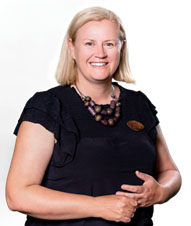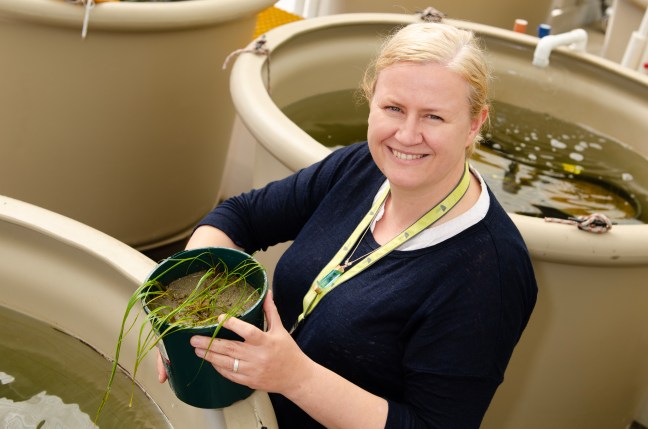
CQUniversity Associate Professor Emma Jackson‘s STEM career has allowed her to travel all over the world, exploring the depths of the ocean and studying seagrass dynamics. The Senior Research Fellow in Marine Ecology was recently appointed Director of Gladstone’s Coastal Marine Ecosystems Research Centre (CMERC), bringing more than 19 years of research expertise to the role. CQUniversity celebrates Assoc Prof Jackson’s achievements this International Women’s Day 2020.
This year’s IWD theme is #EachforEqual. What does this theme mean to you?
For me, #EachforEqual is about recognising that everyone has a role in moving our society beyond just having policies in place to support equality. It means becoming a society without an unconscious gender bias. It might take a few generations, but I see my role as a research leader is to support researchers of all genders to meet their goals. As a mother, my role is to ensure that my two sons grow up as free from gender stereotypes or bias as possible (pretty difficult).
What does your role at CMERC entail?
As the inaugural Director of CQU’s new Coastal Marine Ecosystem Research Centre, my role is to grow the research strengths we have, by ensuring the centre delivers multi-faceted, high profile marine science capability. It also means acting as the key liaison between CQUniversity and regional partners including industry, government, and community. On a day to day basis that can mean anything from supporting a PhD student in solving a problem or even figuring out the question, to speaking with industry representatives about their research needs and building new exciting partnerships, right through to making sure that I buy a cake on the way to work to celebrate a colleague’s first first-author paper.
In a bid to help entice other women to consider STEM and research, what are some of your career highlights so far?
My career highlights would be the excitement of having my first ever paper, the literature review for my PhD, published (my challenge is still to beat it in terms of annual citations!). Next would be having the opportunity to job share two research positions, (University of Plymouth Marine Institute and The Marine Biological Association of the UK) with a fantastic colleague, and fellow new mother, who made returning to work after maternity leave not just manageable but prolific.
Travelling the world to conferences, visiting the local seagrasses and meeting local researchers, and doing my first keynote. Working with a local artist and CQU colleagues to put the ‘A’ in ‘STEAM’ by developing a seagrass inspired Seagrass Seascapes Exhibition. Coming to CQU and the support across the board I have received here, culminating in my absolute highlight (so far) of being offered the Director position of a fantastic new research centre (CMERC) which I helped establish over the last few years.
Who/what inspired you to study seagrass dynamics and marine conservation management?
When I was younger I always wanted to be a tree surgeon, but then I went snorkelling and found many more interesting things under the water. I went on to do a degree in Marine Biology in Scotland. Even diving in a thin wetsuit in 8°C water didn’t put me off and every holiday I worked at a council-run marine education centre. I first saw seagrass when I was an undergraduate on holiday in Australia, and it was just swarming with marine life. During my Master of Applied Science, I met an octogenarian botanist in the Orkney Islands, Elaine Bullard MBE, who had literally devoted her life to systematically recording the flora of Orkney. Seagrasses were next on her agenda, but her snorkelling days were over (though it didn’t always stop her). Elaine’s passion was addictive and I was hooked.
Given your role at CMERC and research commitments, how do you find time for yourself? And, how important is downtime to you?
I would like to say that I regularly meditate, do yoga and go to the beach with my kids. But I don’t. I have chosen a career I love and I bring my children along on the ride by getting them involved. I do go walking on the beach but it tends to be the muddier kind, with seagrass on it, and my eldest son knows every species of local seagrass and what the flowers look like! That said, I very much value having ‘time to think’, and I now realise that I have to actively make time for that.
If you had a message for your 12-year-old self, what would it be?
Stop the tree surgeon dreaming and cut straight to marine biology, that will be your real passion.
